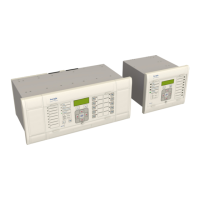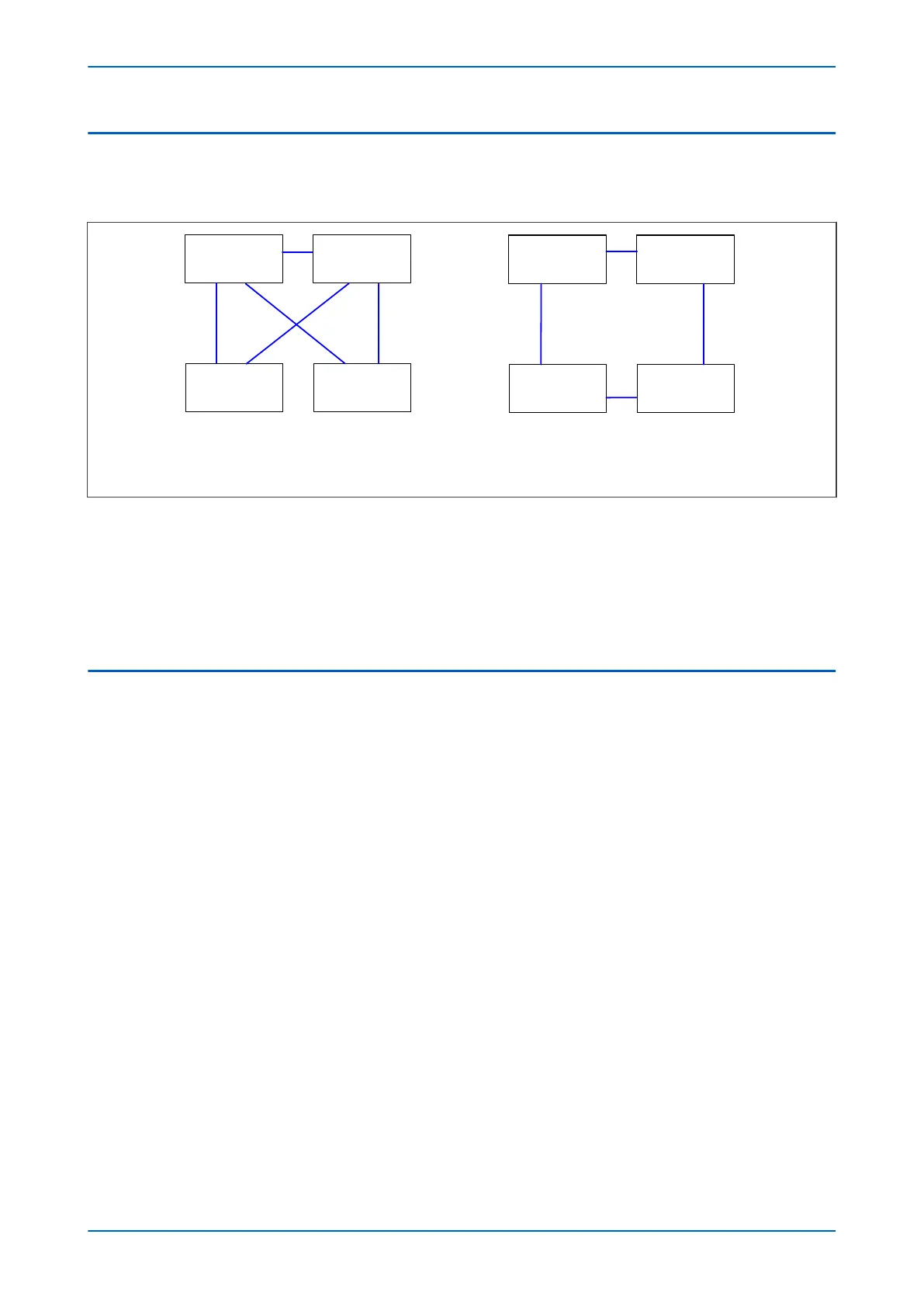5.3 RAPID SPANNING TREE PROTOCOL
RSTP is a standard used to quickly reconnect a network fault by finding an alternative path. It stops network loops
whilst enabling r
edundancy. It can be used in star or ring connections as shown in the following figure.
V01010
Switch 1 Switch 2
IED 1 IED 2
Switch 1 Switch 2
IED 1 IED 2
Star connection with redundant ports
managed by RSTP blocking function .
Ring connection managed by RST P
blocking function on upper switches
and IEDs interconnected directly .
Figure 146: IED attached to redundant Ethernet star or ring circuit
The RSTP implementation in this pr
oduct is compatible with any devices that use RSTP.
RSTP can recover network faults quickly, but the fault recovery time depends on the number of devices on the
network and the network topology. A typical figure for the fault recovery time is 300ms. Therefore, RSTP cannot
achieve the “bumpless” redundancy that some other protocols can.
Refer to IEEE 802.1D 2004 standard for detailed information about the opration of the protocol.
5.4 SELF HEALING PROTOCOL
The Self-Healing Protocol (SHP) implemented in the REB is a proprietary protocol that responds to the constraints
of critical time applications such as the GOOSE messaging of IEC 61850.
It is designed, primarily, to be used on P
ACiS Substation Automation Systems that employ the C264-SWR212
and/or H35x switches.
SHP is applied to double-ring network topologies. If adjacent devices detect a break in the ring, then they re-route
communication traffic to restore communication as outlined in the figure below.
P64x Chapter 16 - Communications
P64x-TM-EN-1.3 323

